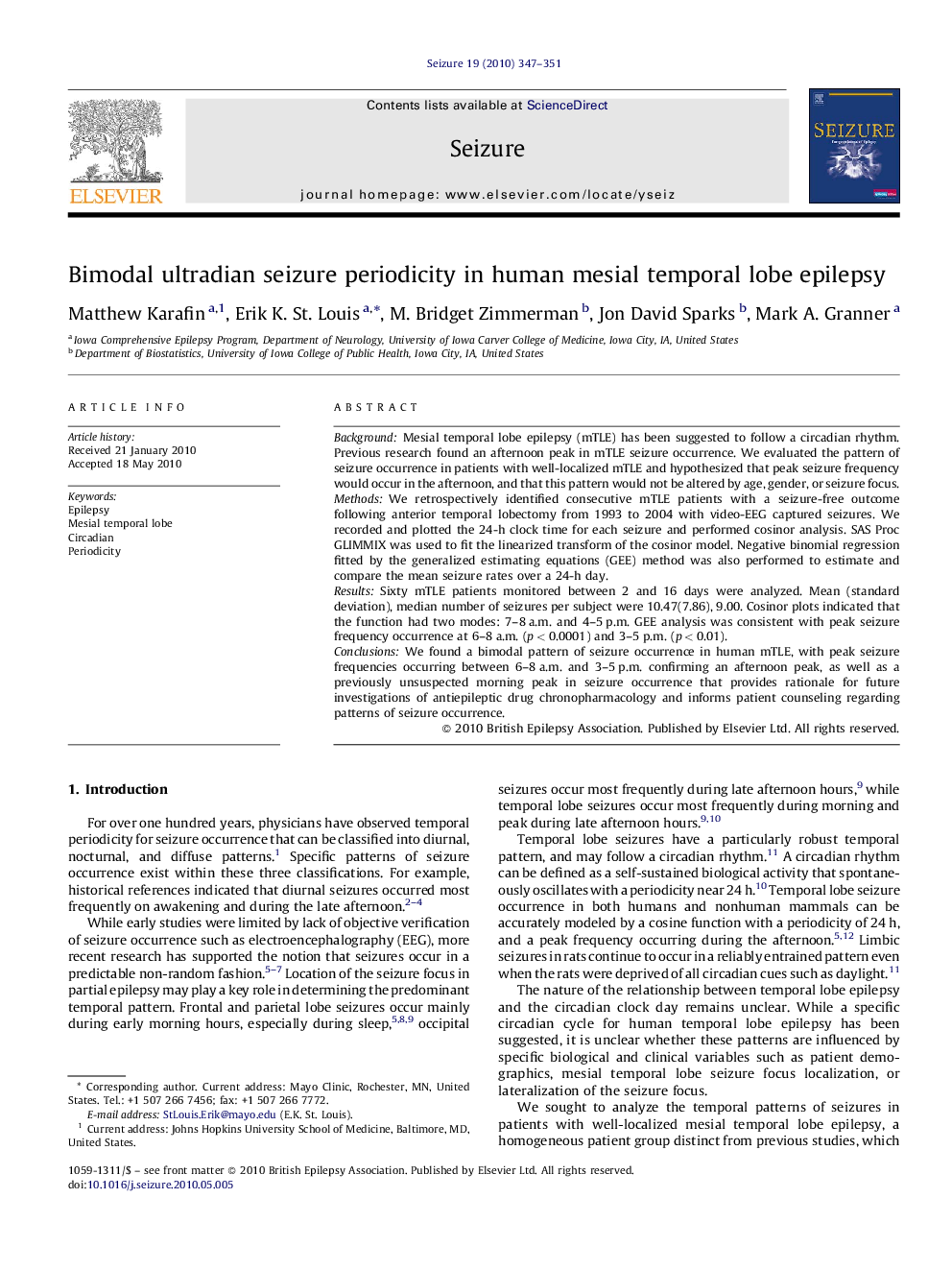| Article ID | Journal | Published Year | Pages | File Type |
|---|---|---|---|---|
| 340719 | Seizure | 2010 | 5 Pages |
BackgroundMesial temporal lobe epilepsy (mTLE) has been suggested to follow a circadian rhythm. Previous research found an afternoon peak in mTLE seizure occurrence. We evaluated the pattern of seizure occurrence in patients with well-localized mTLE and hypothesized that peak seizure frequency would occur in the afternoon, and that this pattern would not be altered by age, gender, or seizure focus.MethodsWe retrospectively identified consecutive mTLE patients with a seizure-free outcome following anterior temporal lobectomy from 1993 to 2004 with video-EEG captured seizures. We recorded and plotted the 24-h clock time for each seizure and performed cosinor analysis. SAS Proc GLIMMIX was used to fit the linearized transform of the cosinor model. Negative binomial regression fitted by the generalized estimating equations (GEE) method was also performed to estimate and compare the mean seizure rates over a 24-h day.ResultsSixty mTLE patients monitored between 2 and 16 days were analyzed. Mean (standard deviation), median number of seizures per subject were 10.47(7.86), 9.00. Cosinor plots indicated that the function had two modes: 7–8 a.m. and 4–5 p.m. GEE analysis was consistent with peak seizure frequency occurrence at 6–8 a.m. (p < 0.0001) and 3–5 p.m. (p < 0.01).ConclusionsWe found a bimodal pattern of seizure occurrence in human mTLE, with peak seizure frequencies occurring between 6–8 a.m. and 3–5 p.m. confirming an afternoon peak, as well as a previously unsuspected morning peak in seizure occurrence that provides rationale for future investigations of antiepileptic drug chronopharmacology and informs patient counseling regarding patterns of seizure occurrence.
